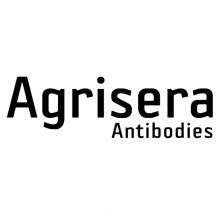
Anti-V-ATPase, subunit 36 kDa (Avena sativa) (clone 7A3)
(Cat#: AS17 4163)
Description
- Immunogen: V-ATPase complex from Avena sativa purified by gel filtration Ward and Sze 1992
- Host: Mouse
- Clonality: Monoclonal, clone 7A3
- Purity: Cell culture supernatant.
- Format: Liquid
- Quantity: 1 ml
- Storage: Store at -20°C; once reconstituted make aliquots to avoid repeated freeze-thaw cycles. Please remember to spin the tubes briefly prior to opening them to avoid any losses that might occur from material adhering to the cap or sides of the tube.
- Tested applications: Immunoprecipitation (IP), Western blot (WB)
- Recommended dilutions: 1 : 50 - 1: 100 (WB)
- Expected | apparent MW: 36 kDa
- Confirmed reactivity: Avena sativa
- Not reactive in: other monocots
- V-ATPase subunit A is a catalytic subunit of V1 complex of vacuolar ATPase. This enzyme (EC=3.6.3.14) is involved in acidification process of various compartements of eucaryotic cell. This protein is coded by VHA-A gene. Alternative names: Vacuolar proton pump subunit alpha, vacuolar H(+)-ATPase subunit A, V-ATPase 69 kDa subunit
- Li and Sze (1999). A 100 kDa polypeptide associates with the V0 membrane sector but not with the active oat vacuolar H(+)-ATPase, suggesting a role in assembly. Plant J. 1999 Jan;17(1):19-30.Li and Sze (1999). A 100 kDa polypeptide associates with the V0 membrane sector but not with the active oat vacuolar H(+)-ATPase, suggesting a role in assembly. Plant J. 1999 Jan;17(1):19-30.
Boca Scientific is your premiere source for high-quality, innovative solutions for Cell Biology, Molecular Biology, Immunology, genetics and other lab products and reagents. We bring leading-edge products from our own-line and around the world to laboratories in the US and Canada. Our goal is to offer excellent solutions to drive research and discoveries backed by superior customer support.

